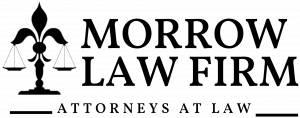
Understanding the Legal Distinctions Between Slip and Fall vs. Trip and Fall Incidents in Louisiana Workplaces
A slip and fall typically occurs when there is a loss of traction between the foot and the walking surface. This is often due to wet floors, oily residues, loose mats, or recently polished tiles. The resulting fall usually moves the body backward and can lead to injuries such as head trauma, back injuries, or tailbone fractures.
By contrast, a trip and fall happens when the foot strikes an object or an uneven surface, causing the person to lurch forward. Common causes include cluttered walkways, uneven flooring, cracked sidewalks, or cables stretched across walkways. Injuries from a trip and fall often involve the face, wrists, arms, and knees as the body instinctively attempts to break the fall.
Though these events may seem minor, they often lead to serious consequences. Workplace falls remain one of the leading causes of injury across nearly every industry. According to the Bureau of Labor Statistics, thousands of workers in Louisiana and nationwide suffer fall-related injuries each year—some of which result in permanent disability or require long-term medical care.
“Liability in fall-related workplace incidents often hinges on identifying the precise mechanism of the fall,” said William P. Morrow, a workplace injury attorney at Morrow Law Firm in Opelousas. “A slip caused by a liquid spill will be handled differently than a trip caused by uneven flooring. Each involves a different set of safety failures, and determining liability requires clear evidence and documentation.”
Louisiana law requires property owners and employers to maintain reasonably safe conditions for workers and visitors. Failure to warn of known hazards or to correct unsafe conditions in a timely manner can result in legal responsibility for any resulting injuries. However, in order for a claim to succeed, the cause of the fall must be clearly identified, and evidence must support the conclusion that the hazard was foreseeable and preventable.
Slip and fall cases frequently involve claims of negligence related to cleaning procedures, drainage systems, or maintenance logs. Surveillance footage, witness statements, and cleaning schedules often serve as key pieces of evidence. In contrast, trip and fall cases may involve building codes, inspection records, and photographs of the physical layout, especially if uneven flooring or obstructive objects were present.
“Proving fault requires more than just showing an injury occurred,” Morrow said. “It requires a close examination of how the fall happened, what condition caused it, and whether that condition existed long enough to have been addressed by the responsible party.”
In a workplace context, both types of falls may involve third-party contractors, property managers, or even product manufacturers—such as those responsible for defective floor mats or poorly designed safety rails. Identifying all potentially liable parties is crucial to ensure injured workers are compensated fairly and fully for medical costs, lost wages, and long-term care needs.
Morrow Law Firm, led by William P. Morrow, John Michael Morrow, Jr., and Stephen M. Morrow, handles workplace injury cases throughout Louisiana. Their work includes fall-related incidents in commercial buildings, warehouses, construction sites, and industrial facilities.
Employers are encouraged to conduct regular safety inspections, train employees on hazard recognition, and enforce reporting procedures for any spills, floor defects, or obstructions. However, even with strong policies in place, lapses occur. When they do, and an injury results, the legal distinction between a slip and a trip becomes more than just semantic—it defines the legal pathway forward.
Legal actions arising from fall-related injuries often require detailed analysis by engineers, safety consultants, and medical professionals. Establishing causation is critical, and small details—like the angle of descent, the type of footwear worn, or the texture of the flooring—can become central pieces of a legal case.
While slip and fall and trip and fall incidents are commonly referred to in the same breath, each has its own profile of risk, liability, and legal remedy. In Louisiana workplaces, knowing the difference can be the deciding factor in determining responsibility and securing compensation after an accident.
Morgan Thomas
Rhino Digital, LLC
+1 504-875-5036
email us here
Visit us on social media:
Facebook
Distribution channels: Culture, Society & Lifestyle, Insurance Industry, Law
Legal Disclaimer:
EIN Presswire provides this news content "as is" without warranty of any kind. We do not accept any responsibility or liability for the accuracy, content, images, videos, licenses, completeness, legality, or reliability of the information contained in this article. If you have any complaints or copyright issues related to this article, kindly contact the author above.
Submit your press release

